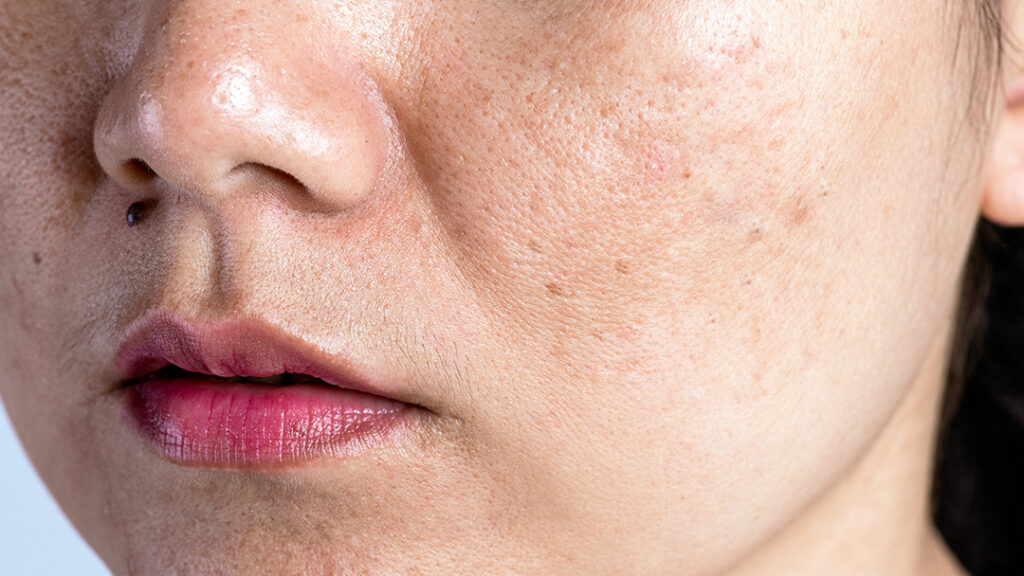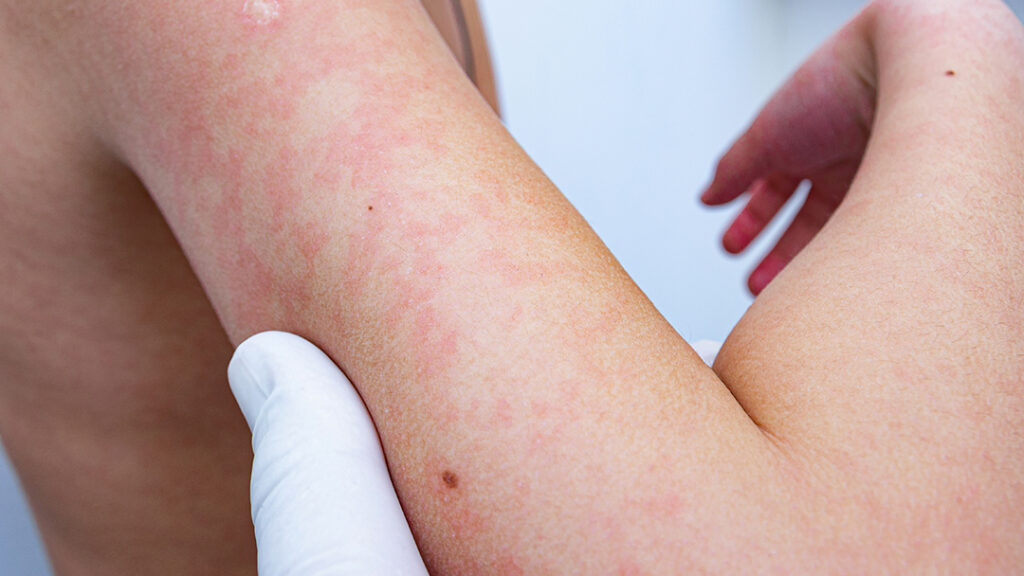
Atopic dermatitis, commonly known as eczema, is a chronic skin condition characterized by inflammation, redness, and itchiness. It often begins in childhood and may persist into adulthood, causing dry and scaly skin patches. Atopic dermatitis is a result of a combination of genetic predisposition and various environmental triggers.
In infants, atopic dermatitis often appears on the face, scalp, and extensor surfaces (outer parts) of the arms and legs. It commonly presents as red, weeping, and crusted patches. As the child grows older the condition may affect other areas like the inner elbows and behind the knees.
In adults, atopic dermatitis manifests on the flexural areas of elbows and knees.
Fungal infection
Fungal infections affecting the skin, often referred to as dermatophytosis or tinea, can manifest in different forms. Common types include:

Tinea capitis or scalp ringworm is more common in children and can lead to scaling, hair loss, and scarring if not treated. In severe cases, the child will present with fever, tender scalp, and swollen lymph nodes.

Tinea faciei is a fungal infection that occurs on the non-bearded regions of the face. Can affect individuals of all age groups but is more commonly seen in children and young adults.

Tinea unguium- When the infection affects the nails, they become thickened, discoloured (whitish or yellow) or brittle.
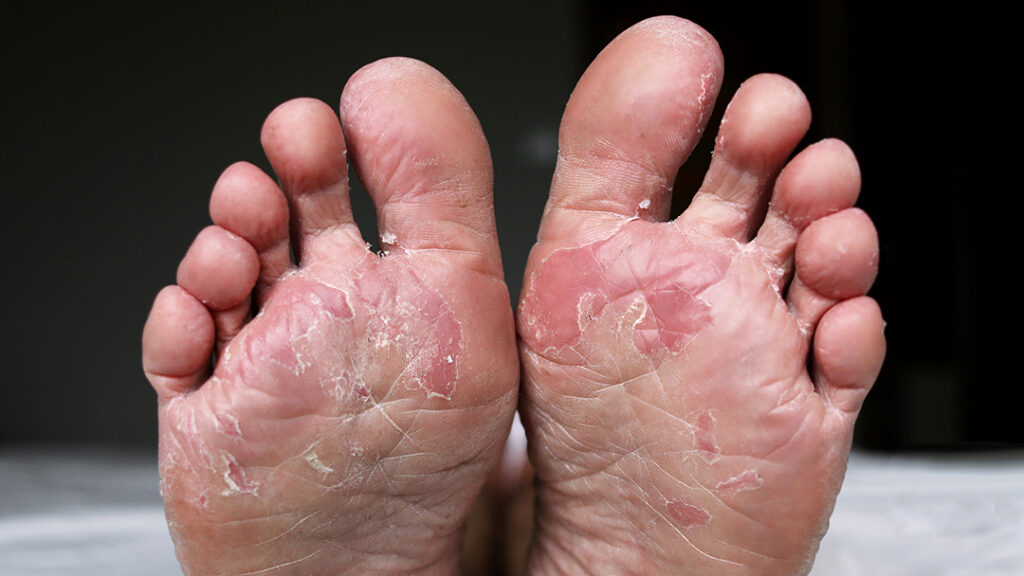

Tinea corporis or ringworm presents with red circular rash with raised edge and central clearing that is scaly and itchy.Itching is the most common feature.There could be blisters and pus filled lesions on the circular rash.The borders may merge together and form bigger patches.

Tinea cruris/Jock itch affects the groin area. Tinea manuum- Can occur in individuals with Tinea pedis due to direct spread of the infection from the feet to hands.It usually presents with dry skin on the palms with reddish rash and scaly borders on the back of the hand.

Tinea barbae also known as the barber’s itch or ringworm of the beard area is a fungal infection that affects the hair follicles in the beard and moustache area of the face.Hair within the affected area becomes easily pluckable without causing any pain.They can present with areas of redness, scaling and pus filled lesions.

Tinea pedis/Athletes foot-Patients often present with itching, redness, scaling, foul odour affecting the soles, between the toes and nails. Risk factors are, excessive sweating, hot and humid climate, prolonged use of occlusive footwear, use of community baths, showers or pools and prolonged exposure to water. Tinea pedis may be associated with secondary bacterial infection
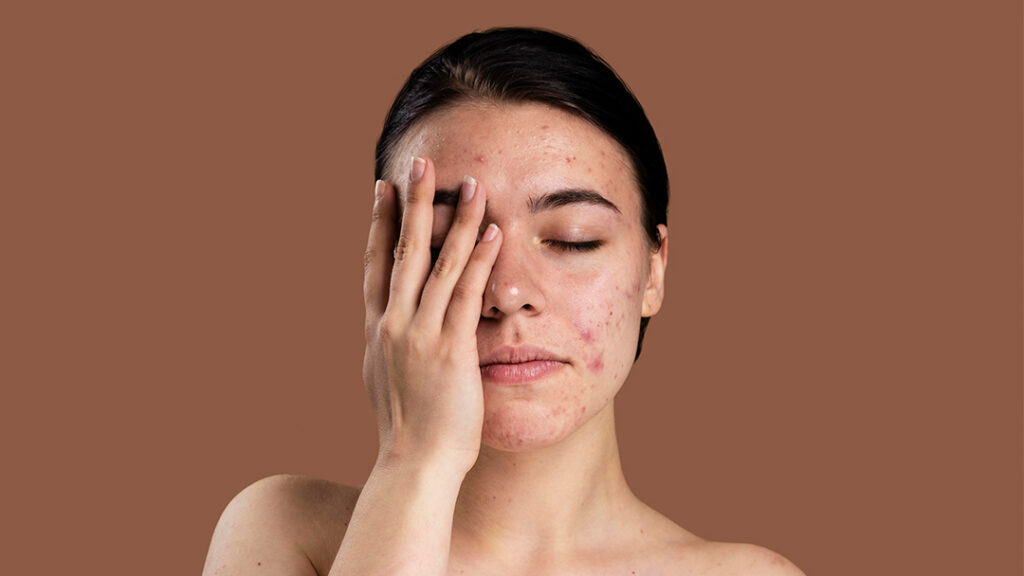
Acne is a chronic, self-limiting, inflammatory disease of pilo-sebaceous unit, presenting with lesions like comedones, papules, nodules, and in severe case with cyst .Scarring is common.
It results from the clogging of hair follicles with oil and dead skin cells, often causing inflammation and blemishes on the skin.
Increased sebum production by sebaceous glands, often influenced by hormonal changes during adolescence, contributes to excess oil on the skin. This, combined with abnormal desquamation of skin cells lining hair follicles, leads to the formation of microcomedones.
Propionibacterium acnes, a bacterium naturally present on the skin, proliferates in these blocked follicles, triggering inflammation.
Acne should be treated at the earliest to avoid scarring.
Vitiligo
Vitiligo is a skin disorder marked by the appearance of white patches on the skin caused by the loss of pigment-producing melanocytes. This autoimmune disorder occurs when the immune system incorrectly attacks and destroys melanocytes, resulting in depigmentation in affected areas.
The clinical presentation of vitiligo is characterized by the presence of depigmented or white patches on the skin. These patches are often symmetrical and can occur anywhere on the body, including the face, hands, feet, and other areas.

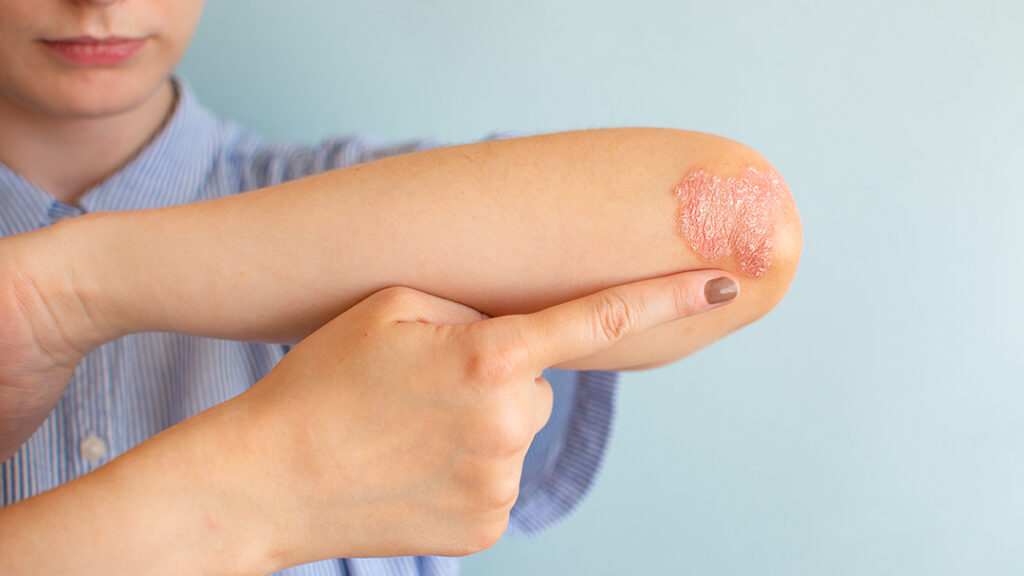
Psoriasis is a chronic skin condition, non Communicable inflammatory disease of the skin and the joints.
Commonly affected sites include the scalp, elbows, knees, and lower back. The pathogenesis involves an abnormal immune response, genetic factors, and environmental triggers, contributing to the accelerated skin cell turnover seen in psoriasis.
It is a recurring chronic condition that worsens during the winter season. Psoriatic arthritis affects the joints in 10% of cases. It can be triggered by a skin injury known as the Koebner phenomenon.
Scars and keloids are marks on the skin resulting from the healing process after injury, surgery, or inflammation. Scars are formed when the skin repairs itself, they may vary in appearance, from flat and pale to raised and textured scars.
Keloids, on the other hand, are raised, thickened scars that extend beyond the original injury site, often due to an overproduction of collagen during healing.
Keloids often appear shiny, and smooth and can be itchy or painful. Both scars and keloids can be influenced by factors such as genetics, wound depth, and skin type. While scars are a natural part of the healing process, keloids can be more pronounced and may require medical intervention for management and reduction.
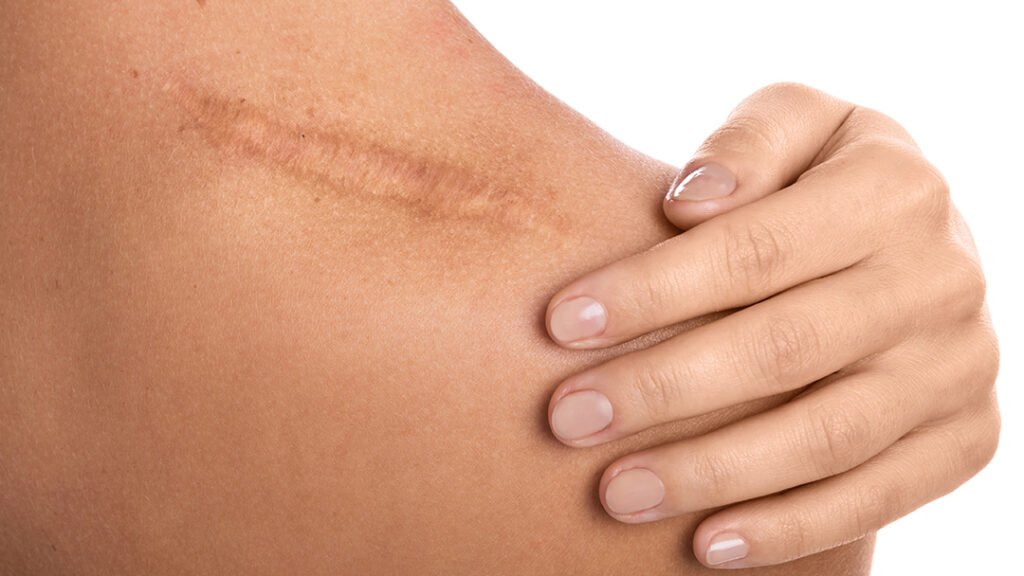
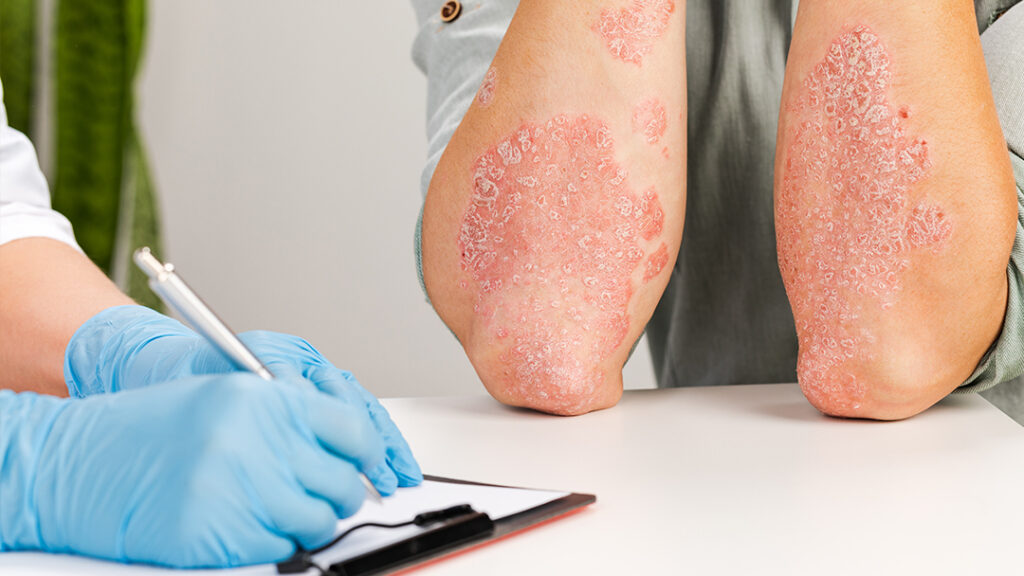
Urticaria, commonly known as hives, is a skin condition that is characterized by raised, itchy lesions that can vary in size and shape. It occurs due to the release of histamine, often triggered by allergies, infections, or stress.
Most cases of urticaria are acute urticaria, which lasts less than 6 weeks and can be associated with infections or intake of food or drugs. Chronic urticaria is either spontaneous or inducible, that lasts more than 6 weeks, and persists for more than a year in most patients.
Pigmentation is the color of the skin that is determined primarily by the presence and distribution of a pigment called melanin. Melanin, which is produced by melanocytes in the skin, is responsible for the various skin tones. Changes in pigmentation can manifest as hyperpigmentation, in which the skin becomes darker due to increased melanin production, or hypopigmentation, in which the skin becomes lighter due to decreased melanin production.
Common pigmentary disorders include melasma, freckles, birthmarks, solar melanosis, drug-induced, solar lentigena , post-inflammatory hyperpigmentation, birthmarks, etc
